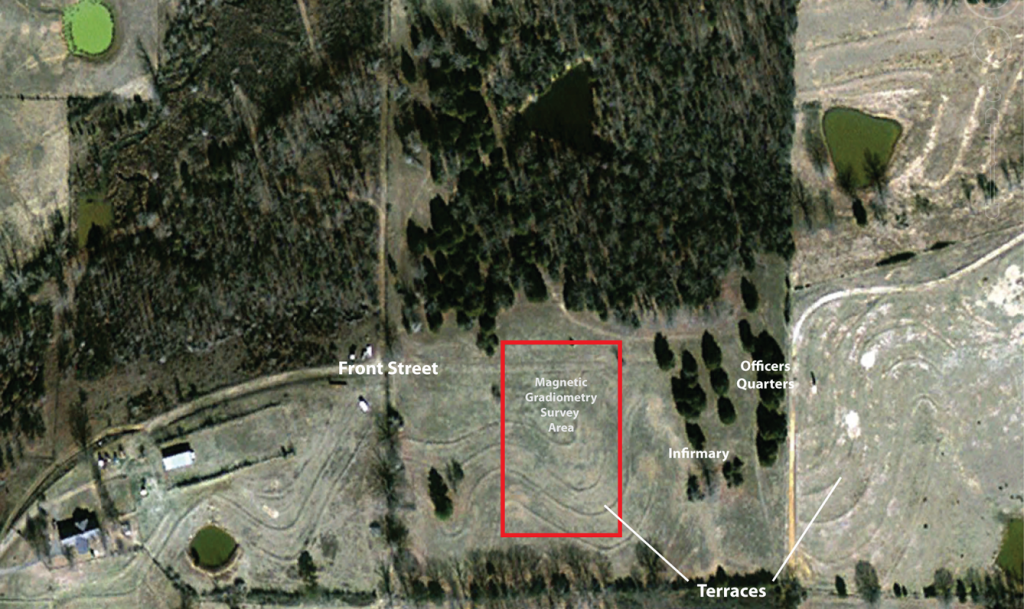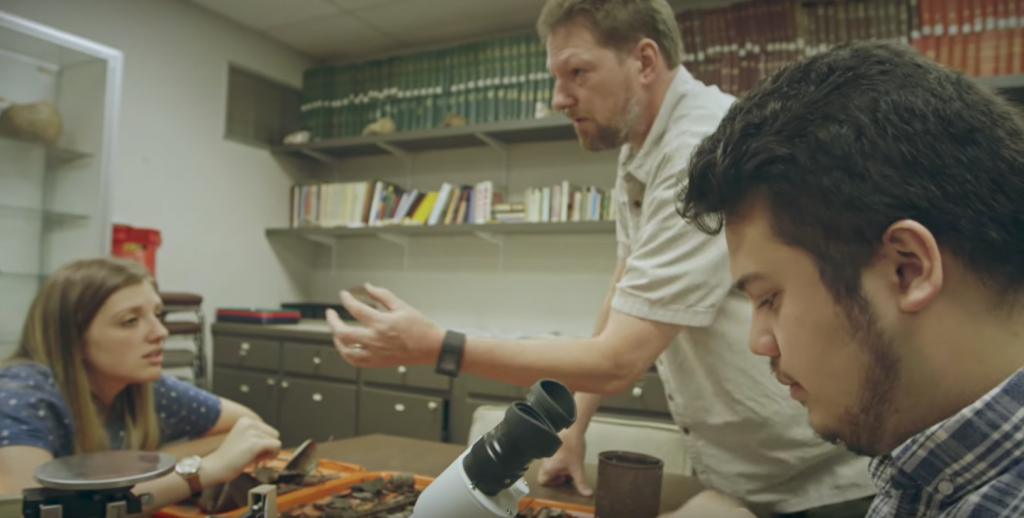UCA Field School 2018
From May 14-18, 2018 University of Central Arkansas students will be conducting archeological field work at Camp Halsey (3FA313) as part of the first accredited archaeological field school at UCA. The upcoming UCA field school at Camp Halsey is part of a long-term collaborative project between researchers at UCA and Faulkner County Museum to map, evaluate, and document historical and archaeological resources in Faulkner County. This larger project, and the work at Camp Halsey, is organized into three themes that serve to frame to our inquiries: site administration and management, pedagogy and public archaeology, and research.
Fieldwork during the May Intersession will be the first set of multi-disciplinary systematic work to address specific research questions related to social, historical, economic, and political aspects of Camp Halsey. Students will be in groups doing fieldwork over the first week. They will be collecting three types of data from the site: magnetic gradiometry (raster), point data using a total station (vector), and feature excavations with associated artifacts.
1. We will be using magnetic gradiometry to begin mapping a large open space south of the old Front Street. The goal is to better understand the construction sequence of the large earthen terraces in this area that were constructed by the Camp Halsey enrollees. It is also hoped that densities of metallic debris will be mapped, which could offer the former location of removed buildings (such as barracks that were on pilings) and provide the extent of Front Street. Students will gain experience using a Bartington magnetic gradiometer and learn skills related to site survey and field data collection, applied physics and magnetism, and processes of landscape use and modification.

2. We will also be using a Topcon total station (on loan from the Arkansas Archeological Survey) to accomplish three items. First, a site grid will be established to guide magnetic gradiometry survey. With a site-wide grid established, we will then be be able to record the spatial location of visible features and create a working map of the site. Third, topographic data (z) will be collected to better integrate constructed features with landscape contours. It will also allow for the creation of a digital elevation model (DEM) that can be integrated with the two-dimensional magnetic gradiometry data. Students will gain experience using a total station and learn skills related to mapping, applied trigonometry, spatial alignment, settlement patterning, distance analysis, and landscape archaeology.
3. Finally, we will be excavating and mapping two features. The first is a large feature (Feature 10) that we propose is the possible location of the infirmary or hospital. A 1934 inventory of buildings lists the hospital as 20 x 60 ridged frame building with four rooms and a capacity of ten. It had both water and sewer connections. The second feature (Feature 11) is the possible location of the officers quarters. The same 1934 inventory of buildings lists “Qtrs for Officers w/screen porch” as a rigid frame structure with five rooms and a capacity of four individuals. Water and sewer connections are listed. Students will gain experience in traditional excavation methods and learn skills related to developing and refining research questions as data are collected, the importance of clear and concise field note taking, the process of creating profile and plan sketches, and how field artifacts are assigned provenience and collected (tagged and bagged) in the field (in accordance with Arkansas Archeological Survey statewide standards).

During subsequent weeks, each student will work on an independent research project in the UCA archaeology lab. Students will gain experience in archaeological lab methods and learn skills related artifact cleaning, cataloging, and accessioning, how to conducted an analysis using a handful of artifacts, the process of digitizing field sketches, remote sensing data processing, the use of primary historical documents to supplement artifact data, and the writing of an archaeological final report.
They will turn in a final research paper that will be submitted to the Journal of Undergraduate Research in Anthropology (JURA) for review.
